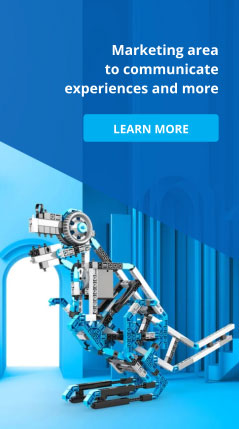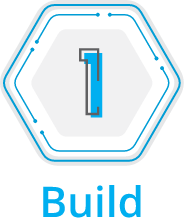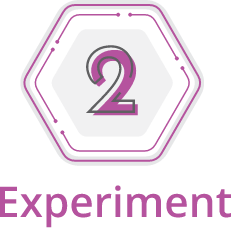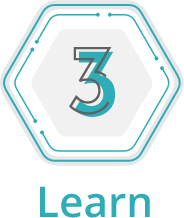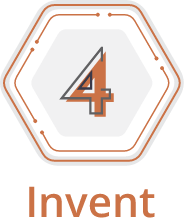My cart
Teaching with Engino
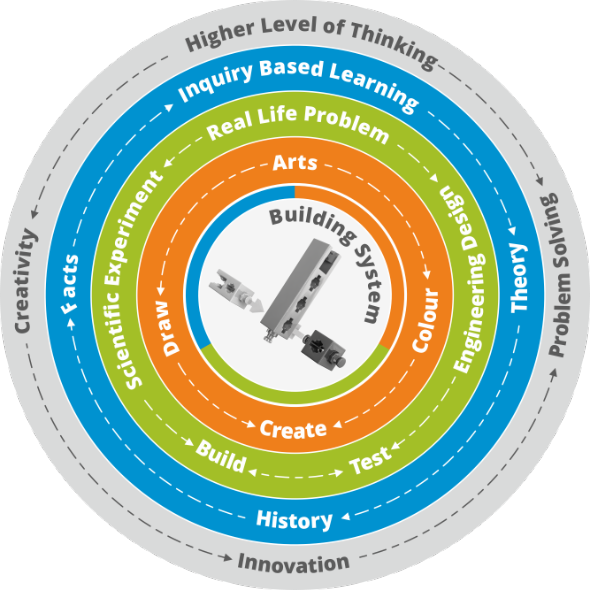
Building System
At the heart of our methodology is the Engino Building System. It's unique in its ability to help students easily build and modify technical models, leading to improved dexterity skills and better 3D spatial perception.
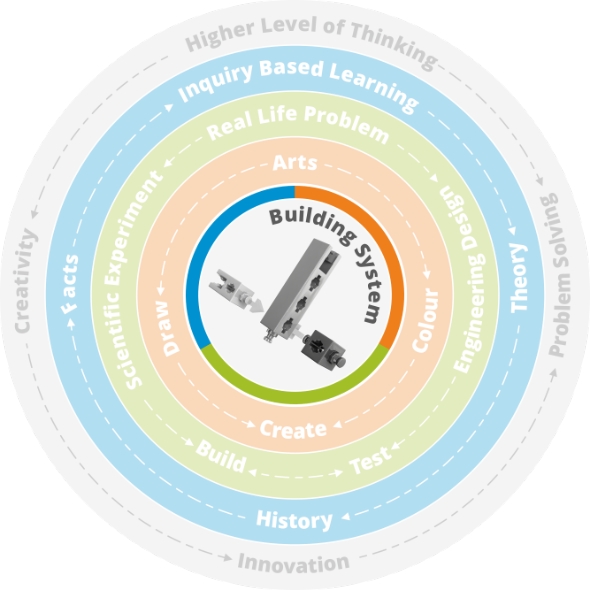
Arts | Colour | Create | Draw
Art is a key element in the next layer of our methodology. At Engino, "A" stands for the highest brain function of human beings: Inspirational Creativity. Inspiration drives masterworks like inventions, architecture, music, painting, and literature. We embed this inspiration during the "making" stage by allowing students to snap colored surfaces onto their designs.
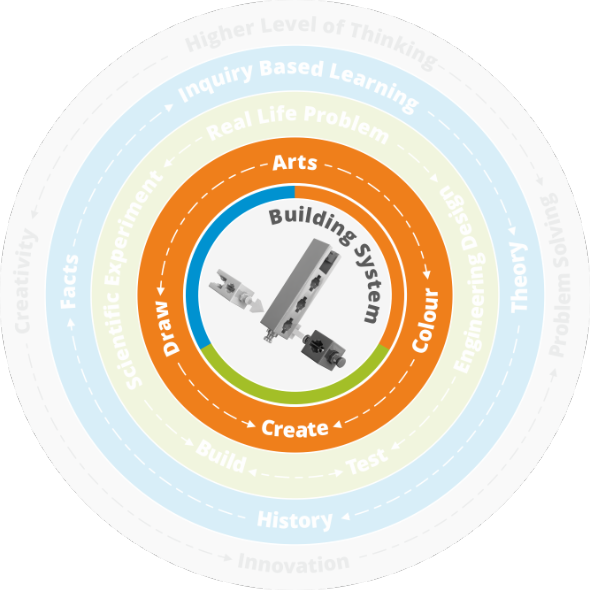
Bulid | Test | Engineering Design | Real life Problem
The next layer engages students more deeply in STEM learning as they now need to solve real-life problems. Problems can be approached as engineering design challenges, scientific experiments, or a combination of both. Through building, testing, and modifying models, students learn through an iterative process that leads to higher-level learning and the acquisition of engineering design skills.
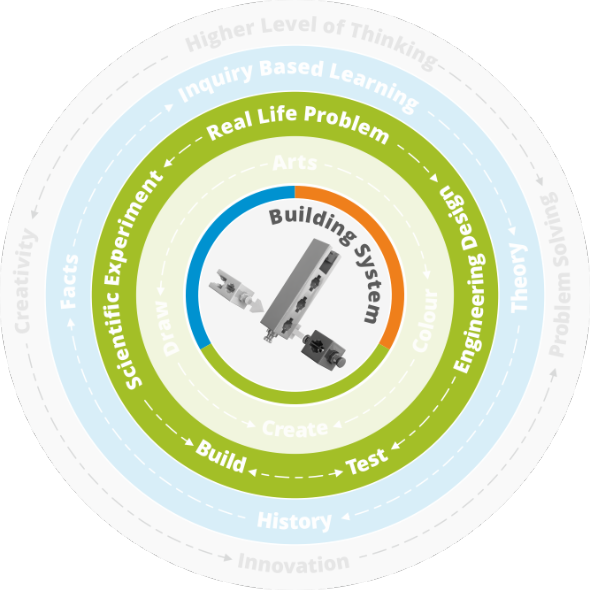
Facts | Inquiry Based | Engineering Design | Real life Problem
After completing their challenge, students can delve deeper into the technology, science, and math concepts behind their solutions. Engino's curriculum provides theory and facts on each subject and encourages inquiry-based learning by allowing students to seek out their own answers.
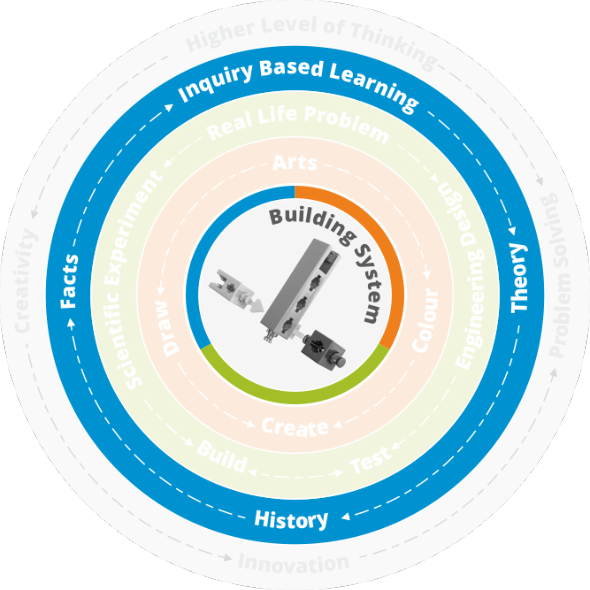
Crativity | Higher Level of Thinking |Problem Solving | Innovation
Guiding students through an interactive approach, they can attain higher levels of thinking and become true problem solvers with enhanced creativity and imagination.
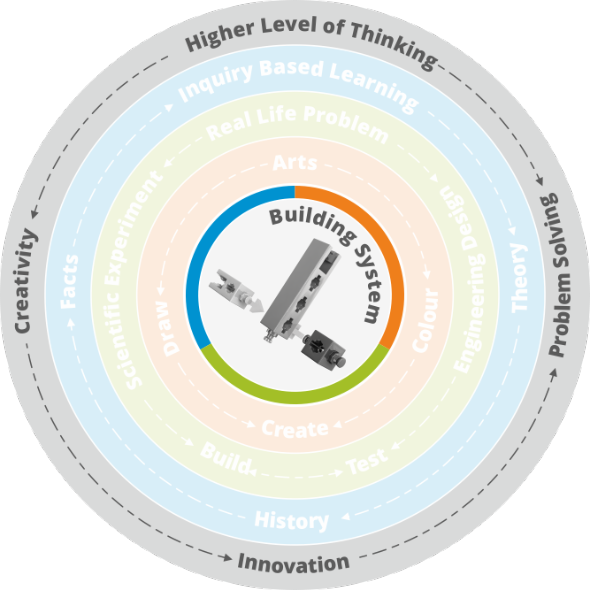
Research
The teacher is guiding children through the research phase encouraging them to use resources like the internet to investigate the problem, record its characteristics, and find possible solutions. By promoting research skills, students gain knowledge and develop creative thinking abilities.
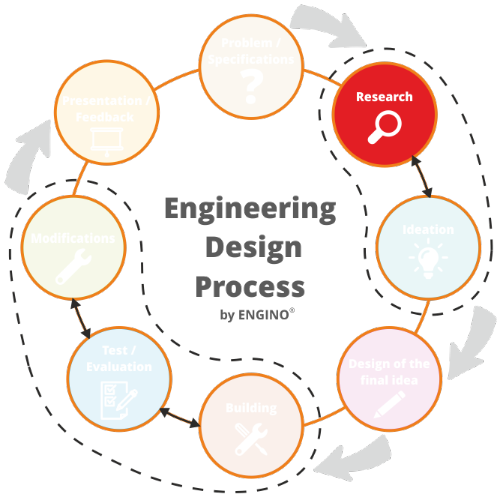
Ideation
After conducting research, children collaborate to ideate various solutions and evaluate the pros and cons of each idea, enhancing critical thinking and creativity skills.
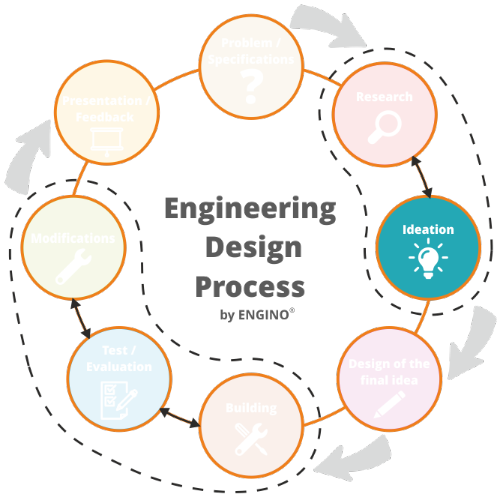
Design of the final idea
They then create a detailed design using pencils and colors, developing communication, and planning skills.
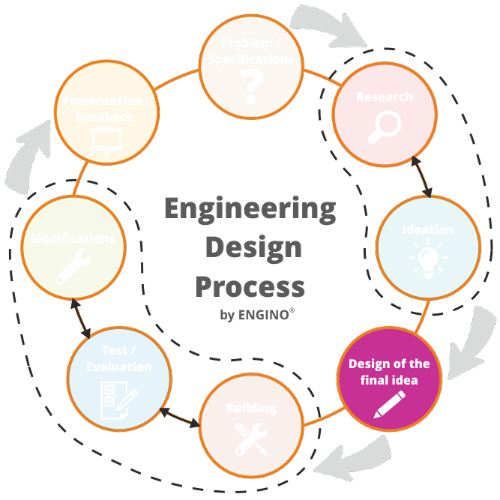
Building
During the building phase, teachers present the necessary components and equipment while ensuring safety and responsible use, teaching children workshop etiquette and risk assessment skills. Children work collaboratively in groups, enhancing their teamwork and problem-solving skills. As construction progresses, they develop fine motor skills and spatial awareness, as well as practical skills such as measurement and construction techniques.
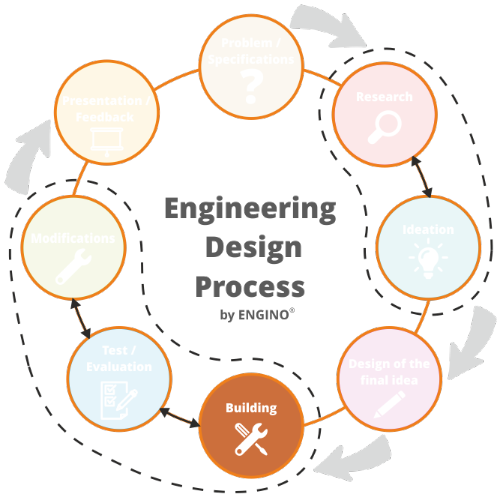
Test & Evaluation
After completing their construction, children enter the test/evaluation phase where they identify and record points that require improvement, enhancing their problem-solving skills.
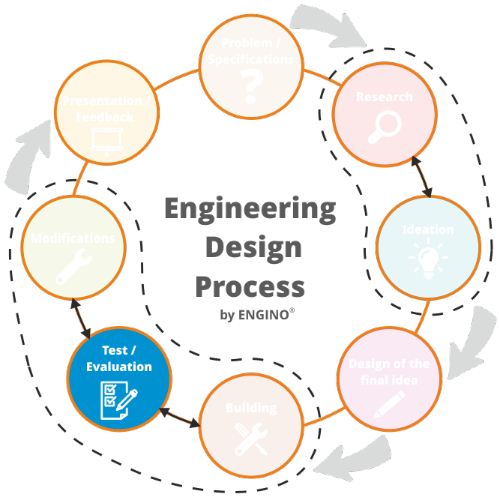
Modifications
They make necessary modifications, experimenting and trying various actions until their construction works properly, promoting perseverance and creativity.
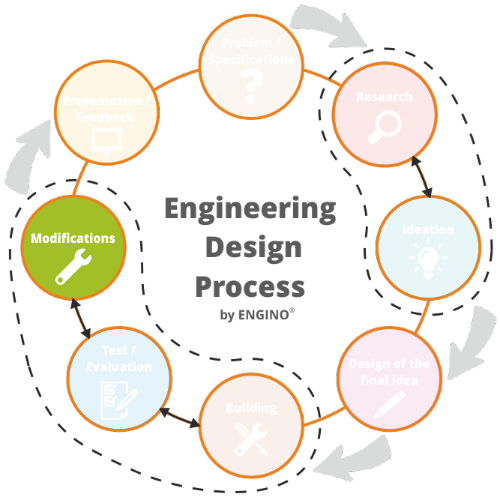
Presentation & Feedback
During the presentation/feedback phase, children showcase their construction through a video or other creative methods, developing communication and presentation skills. This presentation takes place in the classroom, where classmates provide feedback, improving listening and critical thinking skills. By presenting their work, children gain self-confidence and a sense of achievement, which can positively impact their motivation and self-esteem.
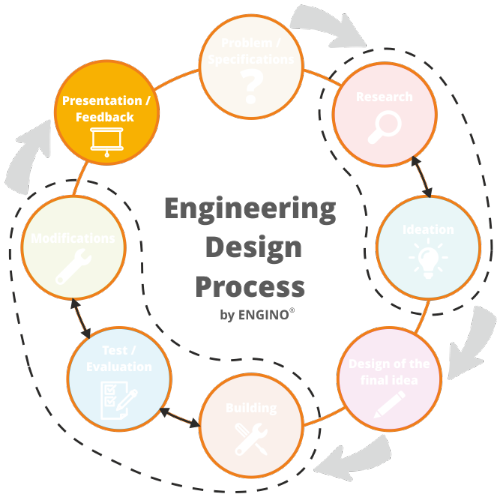
Problem & Specifications
At the beginning of each lesson, the teacher presents a real-life problem to engage students. Using the method of questioning, teachers guide students to analyze the problem and record important points. By applying critical thinking skills and collaborative problem-solving, students can find the best solution to the problem at hand.
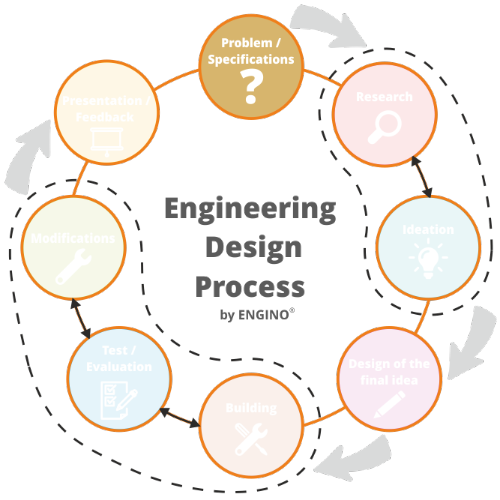
A journey to discovery
Play to Invent...in 4 steps!

Step 1: Build your model
With our patented construction system, kids can stack and snap our colorful parts to make their very own creations that spin, roll, walk, and run. Our system is fully compatible from the age of 3 to 12+, starting with Qboidz™ large blocks, moving on to multidirectional rods and connectors, and advancing to our new mechanical, high-precision parts.
Key outcomes:
With step-by-step printed instructions kids will increase spatial awareness, develop dexterity skills, and even learn to use kidCAD software, where they can practice basic commands like zoom, rotate, explode, and implode.
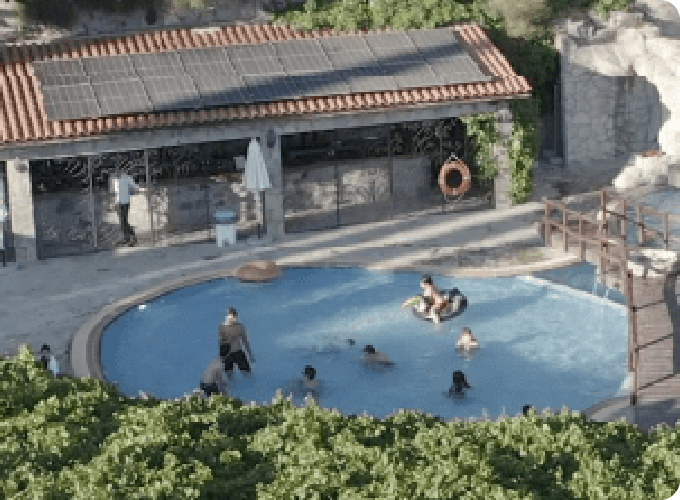
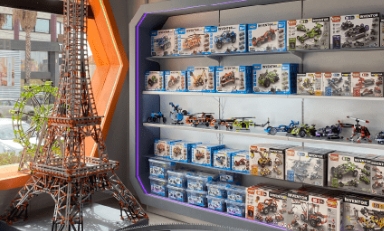
Step 2: Experiment with it
With easy modification and experimentation, our STEM sets allow students to observe and measure scientific principles and technologies, sparking their imagination and encouraging them to ask "why?". From exploring the movements of planets to creating robots, our models are designed to engage and inspire children to explore the world of science.
Key outcomes:
Acquire content knowledge of various subjects as these relate to each set, find out about the history of key inventions and scientific discoveries, develop critical thinking.


Step 3: Learn about STEM
Young learners need to understand theory to answer scientific questions. ENGINO provides the foundation for a lifetime of scientific discovery. Step-2's observations and conclusions are validated in theory sections, giving access to a vast library of beautifully laid-out information. Learn the theoretical background, history, and additional challenges.
Key outcomes:
Apply the engineering design process, develop engineering creativity and problem-solving skills, learn coding, programming, and develop inventive thinking.


Step 4: Invent your own
After acquiring knowledge and skills in the previous steps, kids can unleash their creativity to solve real-life problems. This step is not necessarily the final one, but rather the result of an iterative process that takes place within every step. The ENGINO building system enhances the engineering design process, allowing every child to become inventive regardless of their age and skill.
Key outcomes:
From simple builds to advanced mechanical contraptions with coding and electronics, students can develop engineering creativity and problem-solving skills while learning to code and program.



